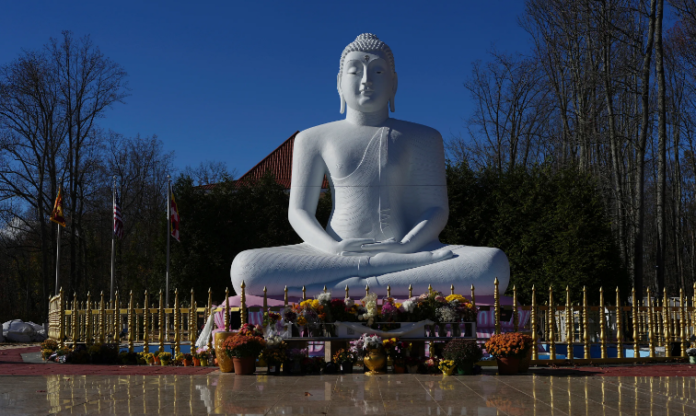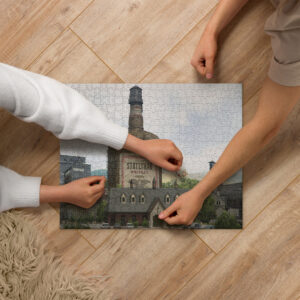In Franklin Township, just off a busy state highway in New Jersey, stands one of the largest Buddha statues in the United States—a 30-foot-tall symbol of peace and spiritual unity. Nestled within the New Jersey Buddhist Vihara and Meditation Center, this monumental statue has become a unique beacon for interfaith connection and a spiritual sanctuary for people from diverse religious backgrounds.
Built a decade ago under the leadership of a Sri Lankan Theravada Buddhist monk, the statue was designed with a singular vision: to unite people of all faiths. Since its installation, it has served not only as a place for Buddhist meditation but also as a gathering point for Hindus, Christians, and people of various other spiritual traditions. Its serene presence amidst the woods, framed by Route 27’s bustling traffic, reflects the surprising blend of tranquility and modern life that defines New Jersey’s rich religious landscape.
Among those drawn to the statue is Daniel Choi, a Princeton University professor raised in a Korean Christian church. Choi, who now practices Tibetan Buddhism, has meditated in front of the Buddha since 2015. “It just seems to be a nexus where a lot of people connect,” he says. The center, though primarily rooted in Theravada Buddhism—the tradition practiced in Sri Lanka, Burma, and Thailand—welcomes a variety of Buddhist practices, making it a rare public space where people of different traditions can come together in spiritual harmony.
This inclusivity is seen in the variety of people who visit, from Sri Lankan Buddhists to Korean, Chinese, Indian, and Nepalese communities. The peaceful atmosphere is further enhanced by the center’s colorful Tibetan prayer flags and an interfaith peace mural, painted by local students, that reflects the religious diversity of central New Jersey. The mural includes symbols from Buddhism, Christianity, Sikhism, Baha’i, and other faiths, emphasizing the shared values of peace and compassion across religious boundaries.
The statue itself stands as a calm and collected symbol, offering solace to those who seek it. “Anybody who comes to that temple feels so calm and collected once they see that big Buddha,” says Tulsi Majarjan, director of Friends of Nepal-NJ. For him, the Buddha represents a deeper, universal calm that transcends religious lines. His organization has played a key role in promoting interfaith dialogue and creating the peace garden that surrounds the statue.
Carol Kruhen, a retired high school teacher who lives next door to the monastery, has seen firsthand the impact of the Buddha statue. Raised as a Presbyterian, Kruhen became interested in Buddhism after reading Herman Hesse’s Siddhartha and began practicing yoga. The arrival of the saffron-robed monks in 2002 led her to deepen her practice, finding comfort in meditation and Buddhism during a time of grief following her husband’s death. For Kruhen, the Buddha statue is not just a monument but a daily source of reflection on peace, understanding, and compassion.
“It’s the first thing I look at in the morning,” Kruhen says, sharing how the sight of the Buddha from her window has become integral to her daily life. “The whole point of Buddhism is to live in the moment. Meditation gave me a way to focus on the positive.”
Today, the New Jersey Buddhist Vihara and Meditation Center stands as a testament to the power of faith to bridge divides. Whether visitors are drawn to its peaceful atmosphere, its commitment to interfaith dialogue, or the simple, profound presence of the Buddha statue, it has become a spiritual home for many, offering a place to connect, reflect, and grow in understanding.
For those seeking a space for peace, spiritual exploration, or interfaith community, the New Jersey Buddhist Vihara is a unique and welcoming destination—a true reflection of the diverse, interconnected world in which we live.











